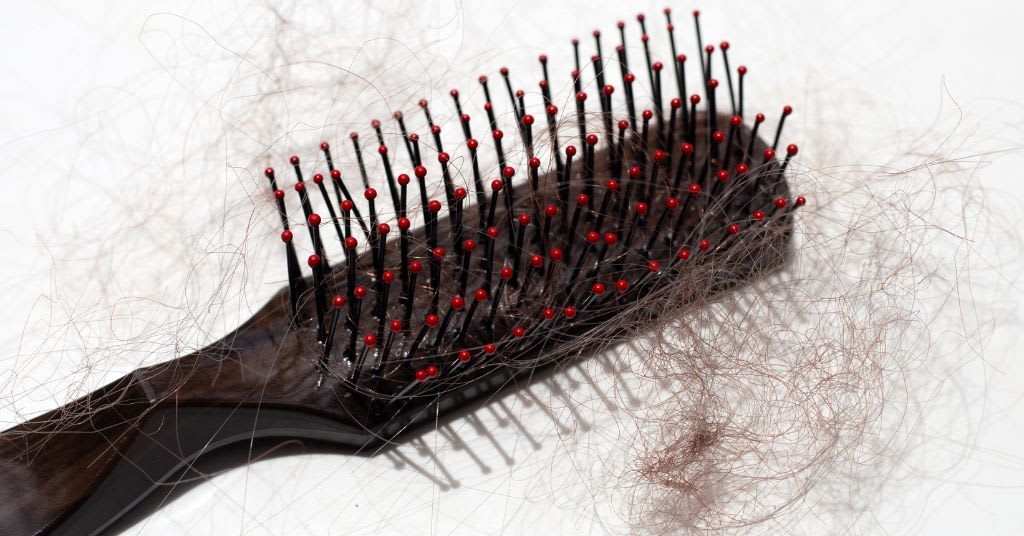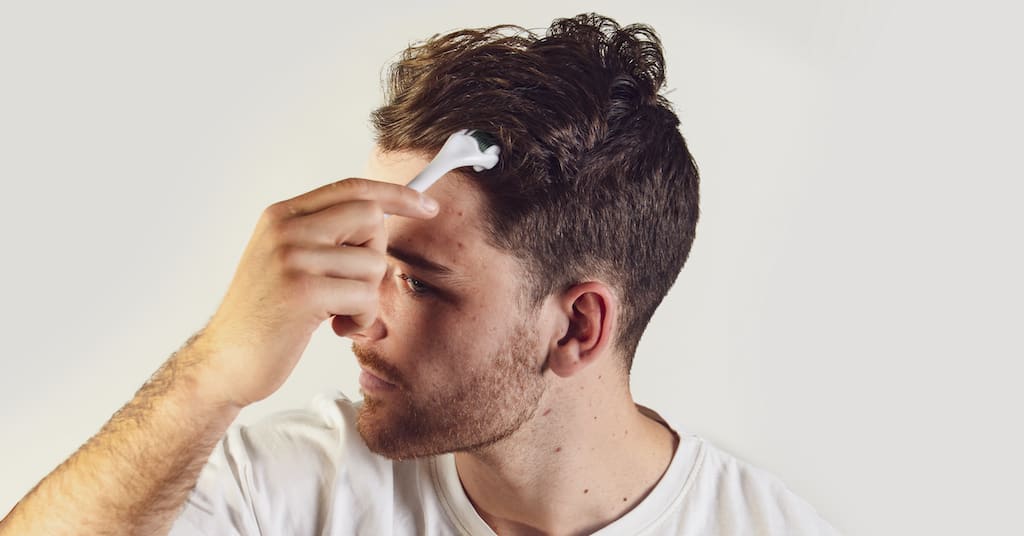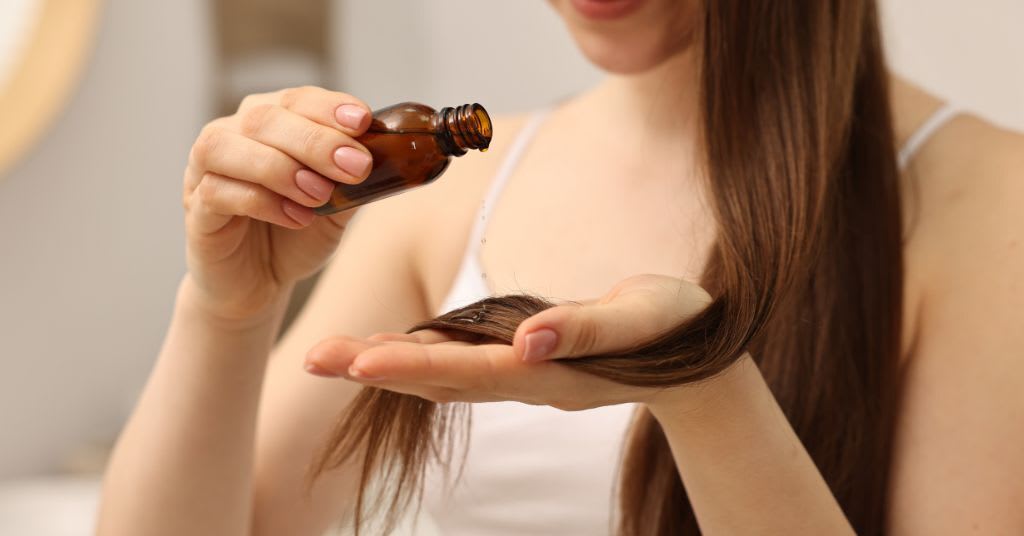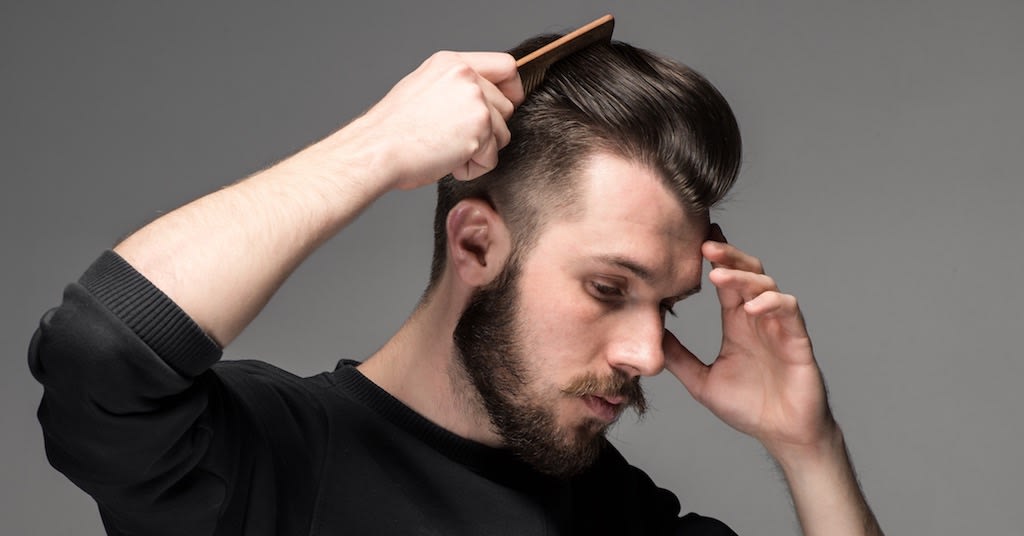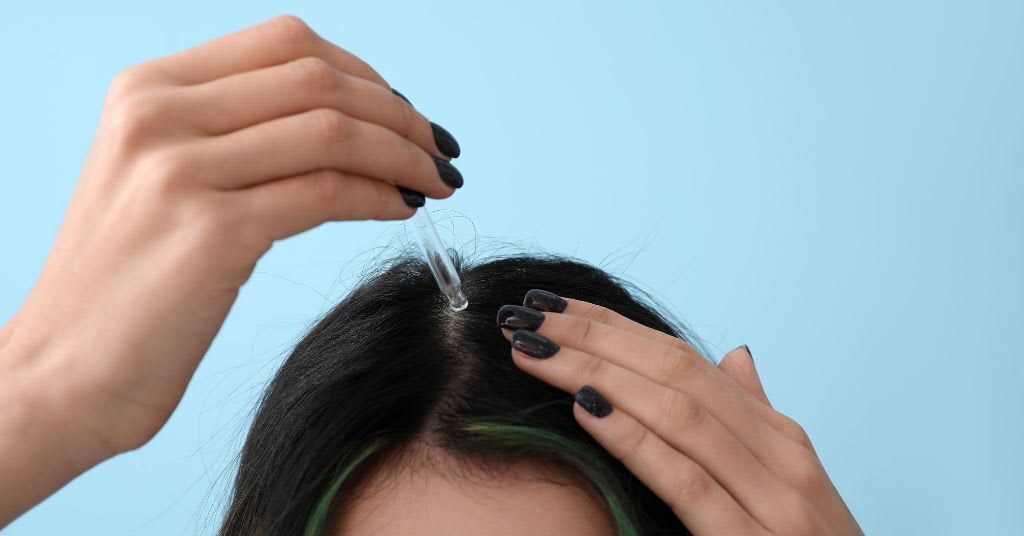Minoxidil is a go-to solution for many people looking to manage hair loss and encourage new growth. But like any medication, minoxidil can cause some side effects along the way.
In this article, we'll break down the common minoxidil side effects that you might experience. That way, you'll know what to expect and can better manage any bumps along the road to thicker hair.
Hair Shedding
One of the most common side effects of minoxidil is shedding. Many users report that they notice more hair falling out during the first few weeks of treatment. This might feel discouraging, but it’s actually a normal part of the process. 1
Here’s what happens: minoxidil works by stimulating hair follicles to move from the resting phase (telogen) to the active growth phase (anagen). In doing so, older, weaker hairs are shed to make room for new, stronger ones. Although it might look like you’re losing hair, this temporary shedding is a sign that your hair is getting ready for regrowth. 1
To help manage this minoxidil side effect:
- Stick to your routine: Even if you notice more hair fall initially, keep using the treatment as directed. Stopping minoxidil now could mean losing all the progress you’ve made — you’d essentially be hitting the “reset” button on your hair growth journey, and no one wants to go back to square one. Additionally, long-term studies have shown that minoxidil remains safe and effective over time, so you’re in good hands if you stay the course. 2
- Keep track of your progress: Taking photos or writing down your progress can be a great way to see improvements over time. This can be especially reassuring during the shedding phase.
- Talk to your healthcare provider: If you feel the shedding is too intense or lasts longer than expected, it might help to discuss this with your healthcare provider.
Scalp Irritation

Another common side effect of minoxidil is scalp irritation. Some people notice redness, itching, or even a mild burning sensation after applying the product. Often, this minoxidil side effect is linked to ingredients in the solution, such as propylene glycol, which is used to help dissolve the active ingredient. For some, this ingredient can cause irritant or allergic contact dermatitis. 3
If you experience scalp irritation, consider these tips to manage this minoxidil side effect:
- Try a different formulation: Many users find that switching from a liquid formulation to a foam can help reduce this minoxidil side effect. Foam versions usually don’t contain propylene glycol, making them gentler on the skin. 3
- Use a soothing shampoo or moisturizer: A fragrance-free, gentle moisturizer or hydrating shampoo can help calm your scalp and reduce redness and itching.
Dizziness
While most side effects of minoxidil affect the scalp, some people may experience systemic reactions like dizziness. Because minoxidil works as a vasodilator — helping to relax blood vessels — it can sometimes lead to a slight drop in blood pressure, which might make you feel light-headed or dizzy. 3
To manage this minoxidil side effect:
- Monitor your blood pressure: Keeping track of your blood pressure can help ensure that any drops remain within a safe range. Regular checks are a simple way to stay informed.
- Stay well-hydrated: Drinking enough water throughout the day can help keep your blood pressure steady and reduce the chances of dizziness.
- Consult with your healthcare provider: If the dizziness is persistent or severe, it’s important to speak with your doctor. They may recommend adjusting your dosage or switching formulations to better suit your needs.
Unwanted Hair Growth (Hypertrichosis)

Minoxidil is designed to promote hair growth, but sometimes, its effects can extend beyond the scalp. Unwanted hair growth, known as hypertrichosis, can occur in areas such as the face, arms, or other parts of the body. This side effect of minoxidil is more likely to happen with higher concentrations of the product. 1
Here are some ways to manage this minoxidil side effect:
- Apply minoxidil carefully: When using minoxidil, be cautious to apply it only to the intended area. Using an applicator or being mindful during application can help prevent the product from spreading to other areas. 1
- Consider dosage or formulation adjustments: If you notice unwanted hair growth, discussing potential adjustments with your healthcare provider can be beneficial. Sometimes, a change in dosage or switching to a different formulation can reduce this minoxidil side effect. 1
- Cosmetic options: If extra hair does develop in unwanted places, temporary cosmetic solutions such as trimming, waxing, or other hair removal methods can help manage the appearance.
Additional Minoxidil Side Effects to Be Aware Of
Besides the main minoxidil side effects described above, some users might notice a few additional reactions when using minoxidil:
- Dryness and scaling: Some users experience a dry or flaky scalp, often due to the alcohol content in the solution. Using a mild, hydrating shampoo or conditioner can help alleviate these symptoms.
- Mild headaches: A few people report experiencing headaches during minoxidil treatment.
- Tingling or burning sensations: Some users report a slight tingling or burning feeling right after applying minoxidil. 1
If any of these minoxidil side effects feel concerning, don’t hesitate to contact your healthcare provider.
Managing Minoxidil Side Effects
Dealing with the side effects of minoxidil doesn’t have to be overwhelming. Here are some practical strategies that can help you manage these reactions effectively while continuing to work toward your hair growth goals:
- Consistency is key: Keep using the treatment as prescribed, even if you experience temporary minoxidil side effects like shedding. Consistency gives your hair follicles the best chance to reset and begin new growth.
- Consider switching formulations: If certain side effects of minoxidil become bothersome, such as scalp irritation, switching from a liquid to a foam formulation might provide relief.
- Document your journey: Keeping track of your progress with photos or notes can be very helpful. This documentation allows you to see improvements over time.
- Regular health check-ups: If you experience systemic side effects of minoxidil, like dizziness, make sure to monitor your blood pressure and overall health. Regular check-ups can ensure that any changes are managed appropriately.
- Talk to your healthcare provider: If you find that any minoxidil side effect becomes severe or does not subside after a few weeks, it’s important to consult your doctor. They can help adjust your treatment plan to reduce the side effects of minoxidil while maintaining the benefits of the medication.
By using these strategies, you can minimize the discomfort associated with the side effects of minoxidil and keep your focus on achieving healthier hair.
Conclusion
Starting a treatment like minoxidil can be a bit challenging, especially when you experience side effects such as hair shedding. However, most of these reactions are temporary and part of the process toward better hair growth. By sticking to your routine, making small adjustments when needed, and keeping an eye on your progress, you can work through these initial challenges.
If you’re looking for an even more comprehensive approach, consider checking out a 5-in-1 hair solution that combines minoxidil, finasteride, ketoconazole, biotin, and tretinoin. This powerhouse combo tackles hair loss from multiple angles, offering an all-in-one boost that might speed up your journey to thicker, healthier hair. For more hair loss solutions, visit MailMyMeds.
Over time, as your hair follicles adjust, you should begin to see improvements that make the effort worthwhile. Stay patient, monitor your progress, and remember that if something doesn’t feel right, consulting your healthcare provider is always a good idea. To learn more about minoxidil, visit our minoxidil blog.
The content in this article is intended for informational purposes only. This website does not provide medical advice. In all circumstances, you should always seek the advice of your physician and/or other qualified health professionals(s) for drug, medical conditions, or treatment advice. The content provided on this website is not a substitute for professional medical advice, diagnosis, or treatment.
